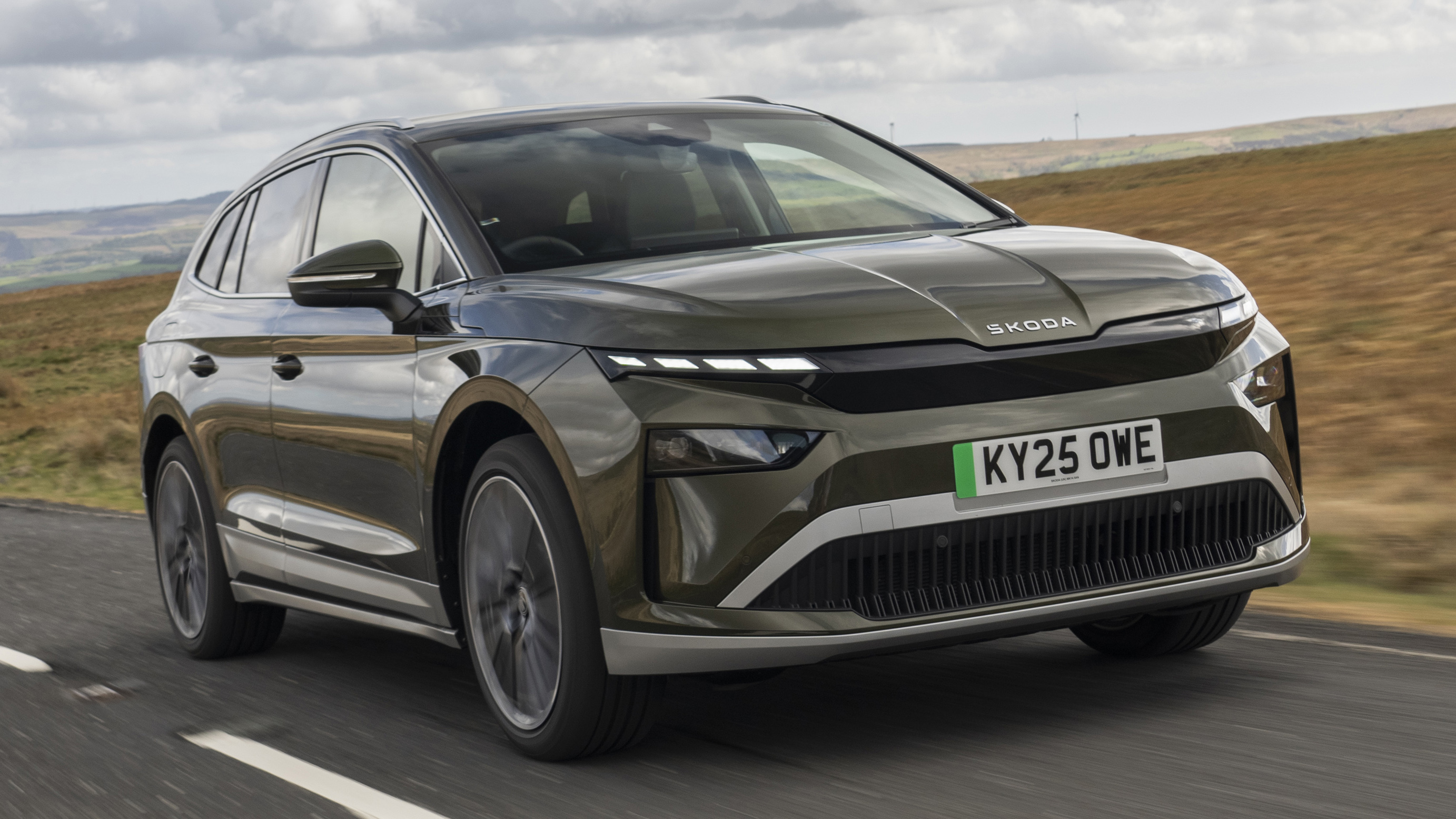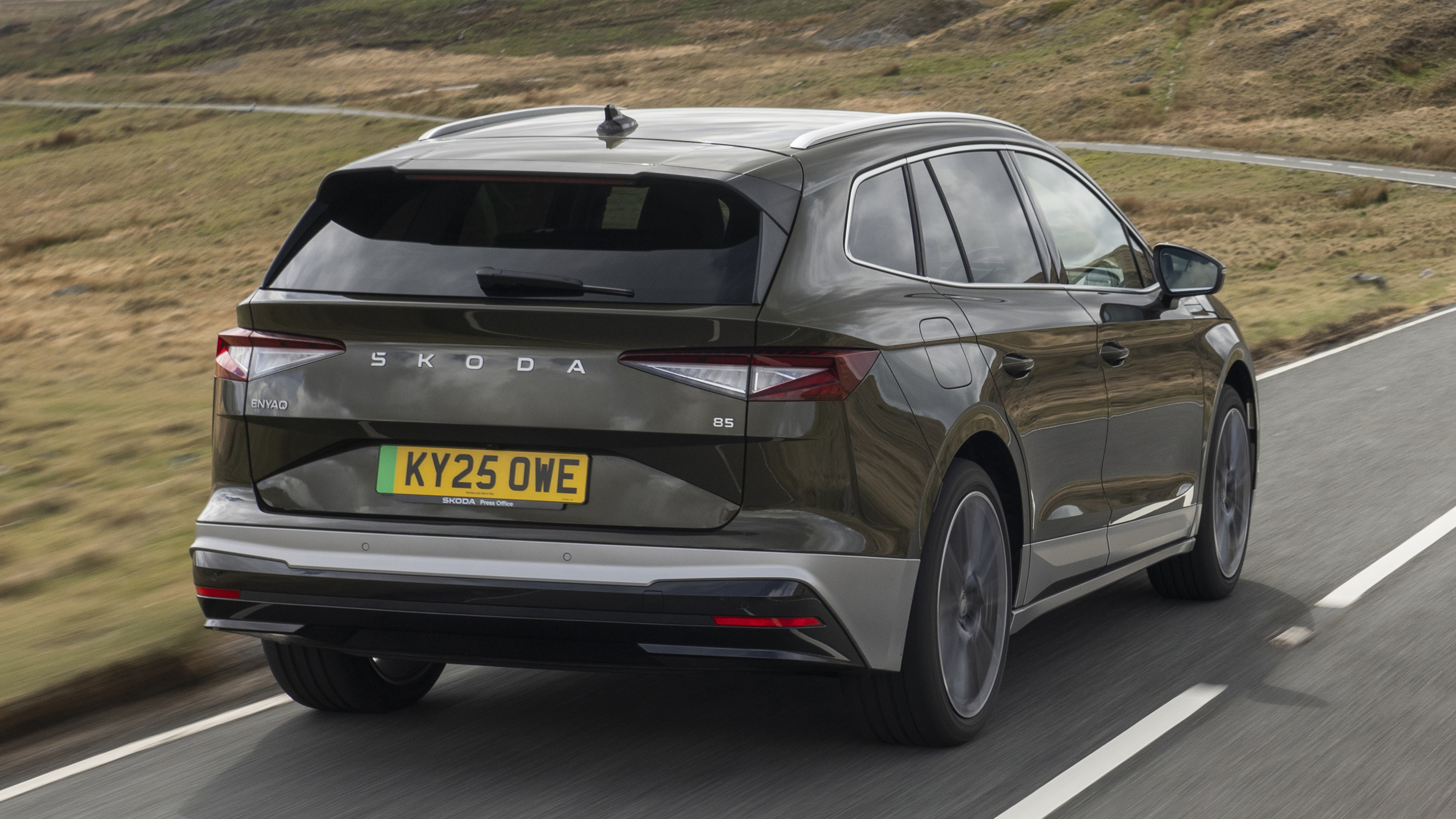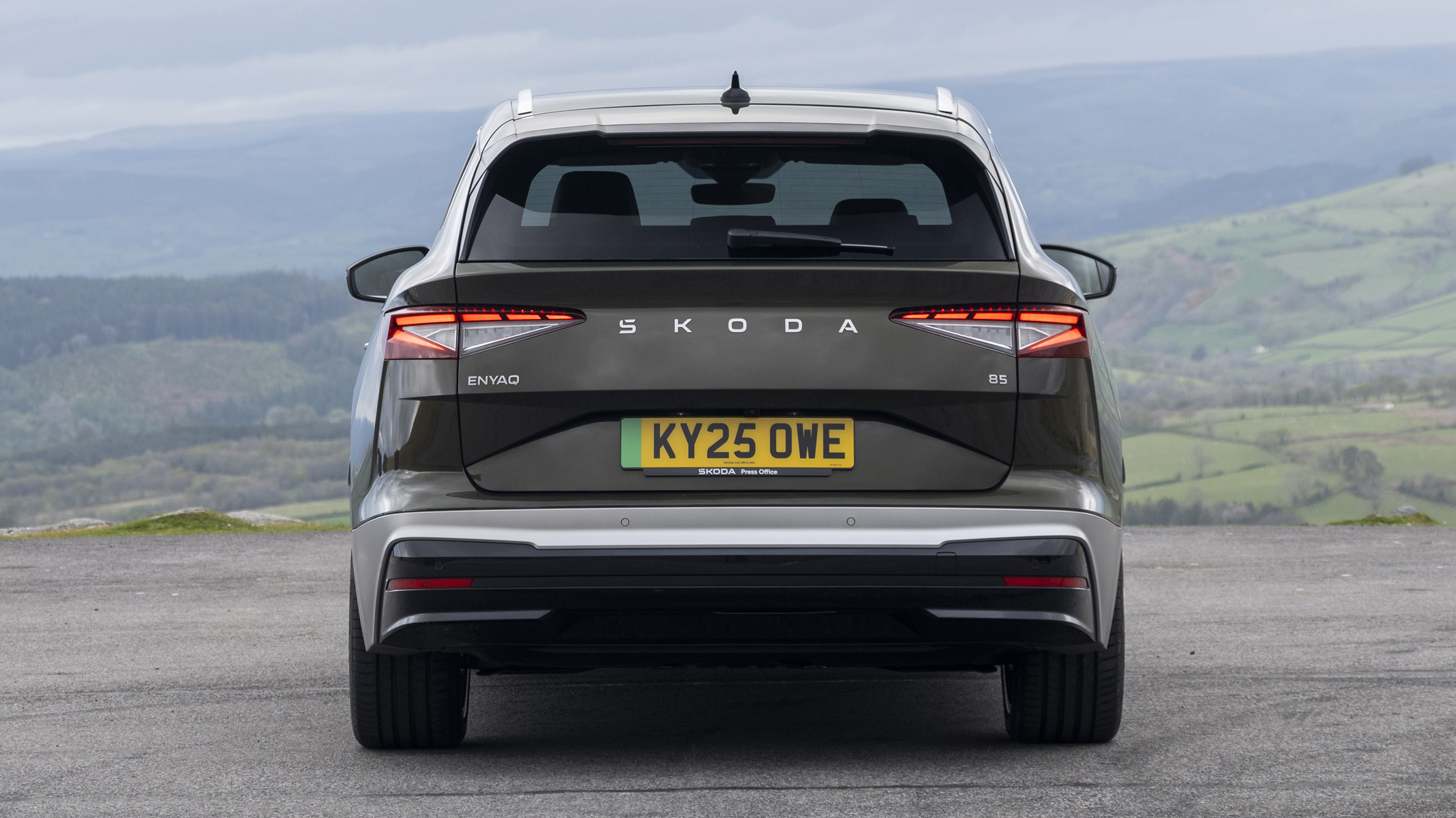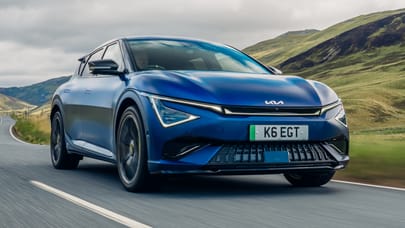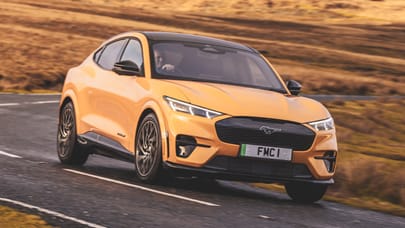
Good stuff
Seriously smart looks, all-round talents, the range you get for the price
Bad stuff
Ride could be plusher, not enough buttons in the cabin, options can quickly add up
Overview
What is it?
Skoda's newly facelifted electric family SUV. It's been a rampant success for the Czech firm, with over 250,000 of 'em sold worldwide since it was launched in 2020. Skoda hopes there'll be even more clamour for it now it's had a glow up.
And the designers haven't messed about, either. The face has been completely remodelled, with slimmer LED headlights bookending a full-width panel, and the old car's massive 'tache has been shaved off.
The changes align with the slightly smaller Elroq and follow Skoda’s new ‘Modern Solid’ design language... which seems to be styled on a Stormtrooper’s helmet. The upshot is a more contemporary look and less drag. Meanwhile, the rear end is basically unaltered.
It's based on the same underbelly as the Volkswagen ID.4 and Audi Q4 e-tron, while other competitors include the Ford Mustang Mach-E, Kia EV6, Hyundai Ioniq 5, Tesla Model Y, Renault Scenic and the Volvo EX40. Lots of talent in that crowd.
Run me through the range…
The Enyaq comes in four broad flavours: 60, 85, 85x and vRS. The Enyaq 60 has a 59kWh battery and the pricier 85-badged models get a 77kWh cell (net). Everything without an x in its name is a single motor, rear-wheel drive car, while the 80x has a dual motor set-up and four-wheel drive.
You’re looking at between 268 and 359 miles of official WLTP range, which is excellent for the money. More on that in a bit.
The 60 is good for 201bhp/229lb ft and the 85 belts out 282bhp/402lb ft – 0-62mph takes 8.1 and 6.7 seconds respectively. Top speeds amount to 99 and 111mph. Like you care.
You will care about charging speeds: the 60 is capped at 165kW and the 85 at 135kW... which is weird. Then it jumps up to 175kW on the 85x, and 185kW on the vRS. Okay then.
The 85x develops the same power as the 85 but generates an extra 99lb ft courtesy of the front motor. It'll cost you some range, though.
Phew! That's a lot to take in.
Hang on, we haven't finished yet! Top of the tree is that flagship vRS, which gets a similar dual motor, four-wheel drive setup to the 85x, but a slightly bigger 79kWh battery (for 344 miles of range) and power boosted to 335bhp. 0-62mph takes 5.4s. Ooft. Full details over on the Driving tab.
There's also a sleeker Coupe version of the Enyaq for good measure.
Cut to the chase: is the Enyaq any good?
The Skoda looks and feels conventional, which will please as many people as it disappoints. And there are surely few easier introductions to electric cars than this: civilised to drive, broadly comfortable, and commendably quick whatever spec you go for.
Inside there’s minimal changes over the pre-facelift Enyaq, but that’s no bad thing. It’s all logically laid out, and the combo of 5in digital instrument cluster and 13in central touchscreen is far less infuriating than VW Group tech of even a couple of years ago.
It’s grown in size ever so slightly compared to the pre-facelift version – by a whopping 9mm – and remains slightly longer than an ID.4 (but shorter than Skoda’s own Kodiaq, a TG favourite), so it’s got a bigger boot. Over 100 litres more with all the seats folded flat. Check out the Interior tab for more.
How much does it cost?
Prices start from £39,010 for the single motor, smaller batteried version, rising to £44,300 for the bigger battery and £48,750 for the dual motor (4WD). You’re looking at £51,660 for the vRS. Head over to the Buying tab for the full lowdown.
Want to know what the best electric cars are? Click here for the top 20
Our choice from the range

What's the verdict?
Skoda nailed the electric family SUV blueprint with the Enyaq, and this facelifted version is even better. It’s smarter looking than before, goes further than before, and costs around the same as before. Winning.
Kudos, then, to Skoda for not trying to rewrite the rulebook here. It didn’t need to, and the result is a car that remains a smarter buy than the equivalent Volkswagen or Audi – it drives just as well, the interior is less annoying and more practical, and the price tag is smaller. Yeah, we're trying to work out what the catch is as well...
If you're tempted to finally dip your toe in the water with an electric car, there are few better places to start than this.




